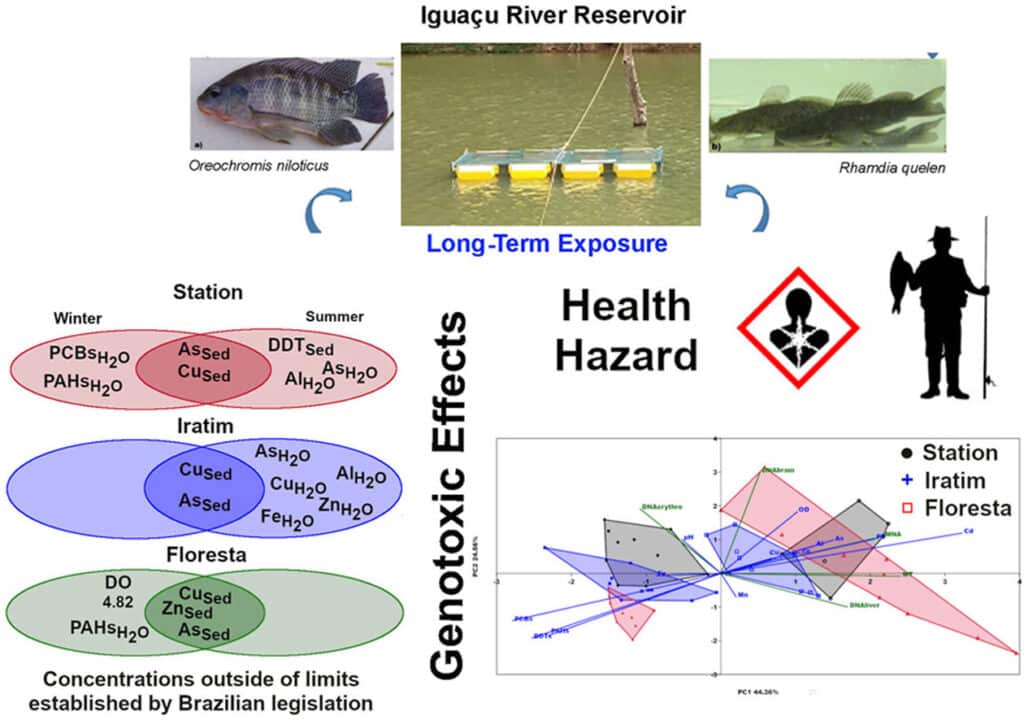Pollutant bioaccumulation in sentinel fish chronically exposed in Iguaçu river reservoirs (Southern Brazil) and human health risk of fish consumption
Dámaso Angel Rubio-Vargas, Tobias Pereira de Morais, Marco Antônio Ferreira Randi, Francisco Filipak Neto, César de Castro Martins, Andrea Pinto Oliveira, Mariana Gallucci Nazário, Fernando Cesar Alves da Silva Ferreira, Iracema Opuskevitch, Dieter Penner, Juan Esquivel-Muelbert, Maritana Mela Prodocimo, Rodrigo Brasil Choueri, Ciro Alberto de Oliveira Ribeiro
Abstract

Bioaccumulation studies in fish mark the initial phase of assessing the risk of chemical exposure to biota and human populations. The Iguaçu River boasting a diverse endemic ichthyofauna, is grappling with the repercussions of human activities. This study delved into the bioaccumulation of micropollutants, the early-warning effects on Rhamdia quelen and Oreochomis niloticus in the Segredo Reservoir (HRS) and the potential risk of human exposure. Two groups of caged fish in three sites of the reservoir were exposed during the autumn-winter and spring-summer, while a third group (O. niloticus) underwent a twelve-month exposure, and inorganic and organic chemicals analysis in water, sediment, and biota. Additionally, metallothionein expression and genotoxicity were employed as biomarkers. PAHs, PCBs, Al, Cu, Fe, and As in water and DDTs, Cu, Zn, and As in sediment surpassed the thresholds set by Brazilian regulations, where DDT exhibited bioaccumulation in muscle, alongside metals in liver, kidney, gills, and muscle tissues. R. quelen showed metallothionein expression whereas DNA damage and NMA frequencies were elevated in target organs and in brain and erythrocytes of O. niloticus during summer. In this species the DNA damage in liver was remarkable after twelve months. Target Hazard Quotients and Cancer Risk values shedding light on the vulnerability of both children and adults. The reservoir’s conditions led to heightened sensitivity to micropollutants for R. quelen species. The data presented herein provides decision-makers with pertinent insights to facilitate effective management and conservation initiatives within the Iguaçu Basin.
http://dx.doi.org/10.1016/j.chemosphere.2023.140812
Paper Link Tags: Artigo